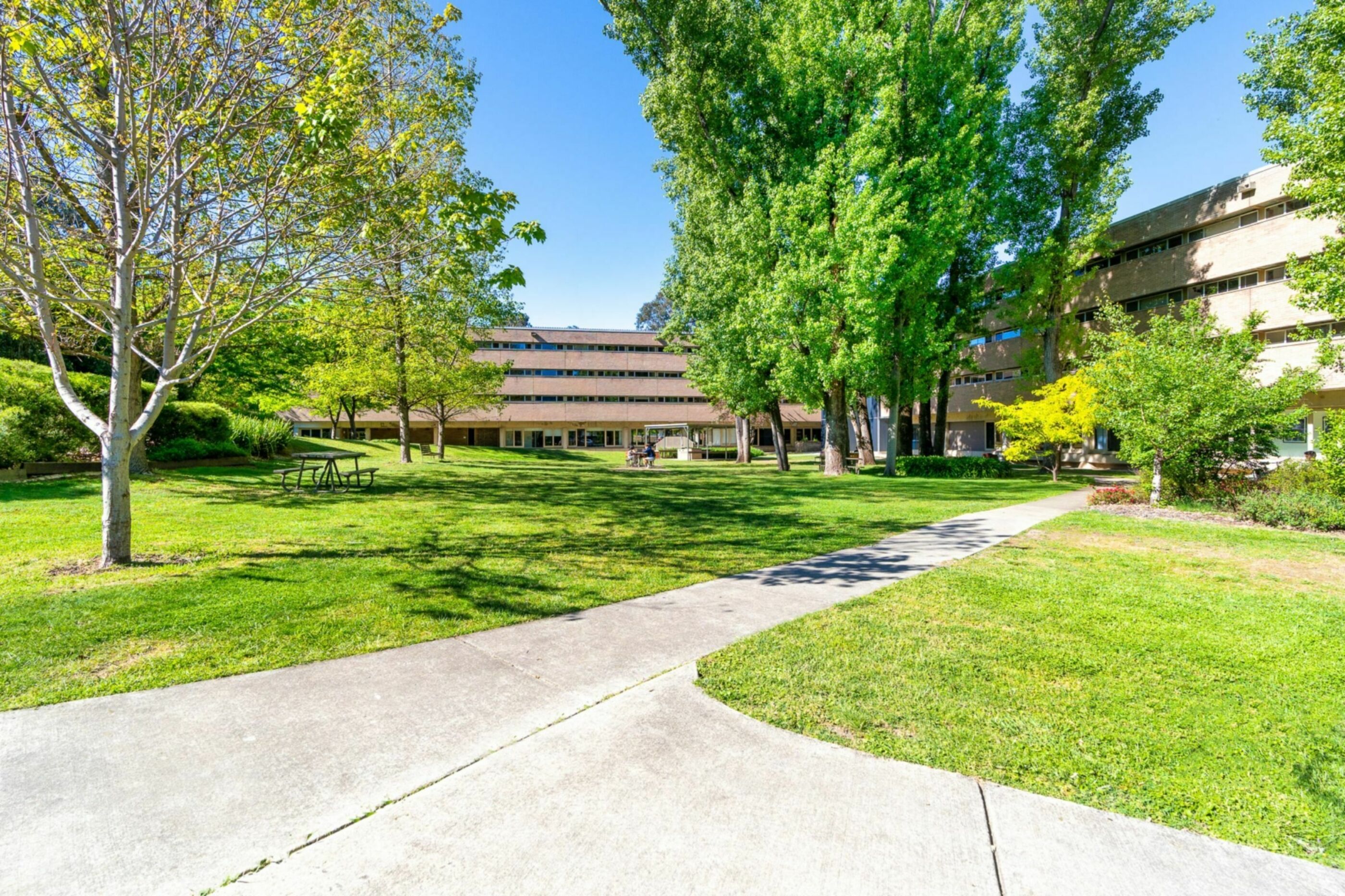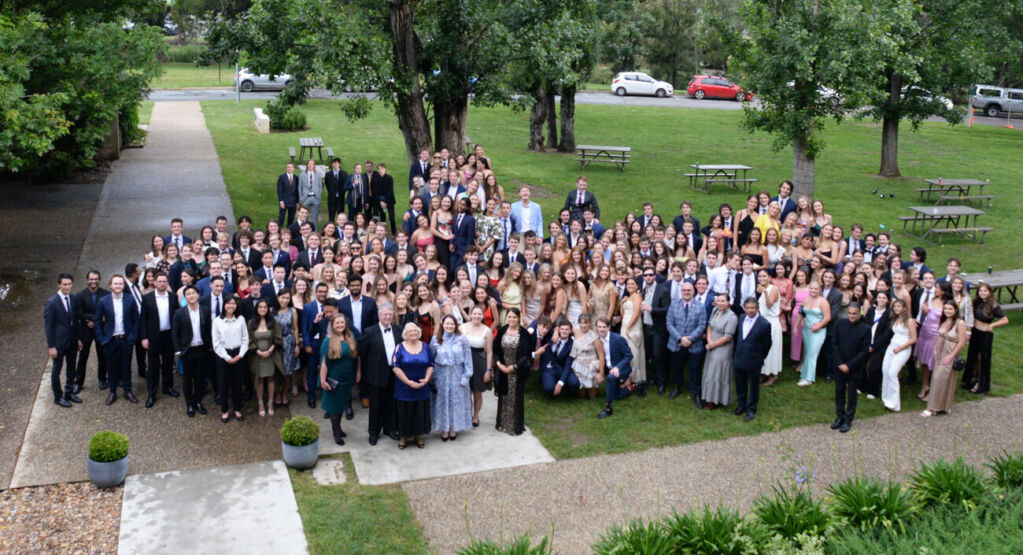Burgmann community contributes to the ANU podcast recording of Virginia Woolf’s A Room of One’s Own
When Australia braced for its first lockdown in March 2020 confined to the limits of her college flat with her children, Residential Fellow Lara Nicholls dreamt up an idea that would bring together readers stuck in their various rooms all over Australia to read aloud passages from Virginia Woolf’s iconic feminist text A Room of One’s Own. Many lockdowns later and thanks to a chance meeting with the Director of the ANU Gender Institute, Professor Fiona Jenkins, fittingly at a Burgmann Arts and Social Sciences dinner, the project is in the can and about to be launched.
Involving members of the ANU community from our First Australian female Prime Minister, the Hon. Julia Gillard, the Vice Chancellor, academics, alumni and undergraduate students, Reading the Room will be launched online by Dame Quentin Bryce on 24th November 2021 at 7pm.
The project has involved many Burgmann readers including Principal, Sally Renouf, Residential Fellow Professor Asmi Wood and Burgmann alumni Ian Darling (1981–1983), Jessica Benter (2018–2019) and Ben Jefferson (2018–2020). Among other readers are postgraduate and undergraduate residents: Isobel Kuo, Poppy Thompson, Will Adams, Will Salkeld, Lara White, Charlotte Young and John Fitzgerald.
A highlight of the project is the incredible logo design by two very talented Burgmann undergraduate women, Lara White, and Kate Rice. Lara Nicholls comments, ‘I love this avatar that Lara and Kate have designed—it is as though Virginia’s famous head is filled with words she can’t contain, and they are about to tumble out onto the page into one of her eloquent and witty essays or books’.

Reading the Room: The Podcast launch
‘Reading the Room’ will be launched by former Governor-General of Australia, Dame Quentin Bryce, who will lead an exciting panel discussion about the book.
Register for the launch of Reading the Room: The Podcast on Wednesday 24 November 7pm here.
Lara Nicholls shares with us here an abridged version of her essay on the experience of re-reading A Room of One’s Own.
Re-Reading the Room
A Room of One’s Own, Virginia Woolf’s great polemic on systemic gender discrimination in society, is based upon a simple walk she takes one October day through a fictitious English university she calls Oxbridge. In October 1928, Woolf had been invited to give a lecture on ‘Women and Fiction’ at the two relatively new women’s colleges of Girton and Newnham at Cambridge University. It is her disgruntled musings upon the topic that form the narrative structure of A Room of One’s Own. In what may be one of English literature’s most abrupt opening lines, she immediately sets the narrative in motion. ‘But, you may say, we asked you to speak about women and fiction – what has that to do with a room of one’s own? I will try to explain.’ The idea of the room in which a woman can create and keep oneself safe becomes a vivid metaphor underpinning the entire possibility of women and fiction, whether they are in it or write it. As we read the book, we walk along beside her as she tries to nut out her topic. It is as though we are in conversation with the great author herself.
Woolf finds her hypothesis early based on the contrast between the two meals she is offered, first at a resplendently wealthy men’s college, considered to be the prestigious history-drenched King’s; contrasted with a sober meal at a fictitious women’s college she calls Fernham, based on the conflation of two dinners she had at Girton and Newnham. Luncheon at King’s consisted of many courses; soles sunk in ‘the whitest cream’ followed by partridges with sauces ‘sharp and sweet’, potatoes sliced ‘thin as coins’, and sprouts ‘foliated as rosebuds.’ All of this washed down with wines ‘flushed yellow and…crimson.’ She leaves King’s - ‘gate after gate seemed to close with gentle finality behind me’ - and walks up the road to Fernham. Once there she dines on a sober repast with the students and their mistress in the dining hall. ‘Plain gravy soup’ in a plain bowl, beef ‘suggesting the rumps of cattle in a muddy market’ followed by custard and prunes, which she evocatively describes as ‘stringy as a miser’s heart’. In these amusing binary descriptions resides the great polemic of the book which she outlines as ‘the safety and prosperity of the one sex and the poverty and insecurity of the other.’ She asks her reader, ‘Why did men drink wine and women drink water? Why was one sex so prosperous and the other so poor? What effect has poverty on fiction?’
Nourishment is not the only metaphor Woolf employs. She is equally interested in the subject of gender-based exclusion and the impact that has had on a woman’s ability to create. At the men’s college she is hastily ushered off the grass reserved for ‘Fellows and Scholars’ and onto a gravel path. When she attempts to visit the library to consult the original manuscript of Milton’s Lycidas, she is waved away at the library door because ‘ladies are only admitted…accompanied by a Fellow of the College.’ This theme escalates at the British Museum where she visits the library to continue her pursuit. In perhaps the first instance of a woman recognising an early example of ‘mansplaining’, she discovers shelf after shelf of books written about women by men, although curiously, none about men by women. The texts presented an overwhelming cacophony of opinions, which she could only summarise in a hand-drawn sketch of a professor; a composite image of those learned writers explaining ‘the mental, moral, and physical inferiority of women.’
Upon picking up a newspaper over lunch, Woolf’s professor figure grows before her eyes into a metaphor for male dominance across the whole of society. The news articles were only about what men have done, are doing and will do. ‘The most transient visitor to this planet, I thought, who picked up this paper could not fail to be aware…that England is under the rule of a patriarchy.’ She concludes, ‘his was the power and the money and the influence…with the exception of the fog he seemed to control everything’. Her solution is for women to have their own money even if the system is designed to hurl obstacles in her path and prevent such female-empowering economic and social reform. When she dined at Girton on that October evening, the University had allowed access, but it still refused to confer their degrees in effect barring the way to professional posts and equal remuneration in their chosen fields. A current day equivalent would be the gender pay gap, a casualised female workforce and women’s disproportionately lower levels of superannuation.
Woolf’s original timing of A Room of One’s Own is also significant. She presented the original lecture in the same year that women’s rights to vote had just been legislated in the British parliament by way of the Equal Franchise Act (1928). Since the first female enfranchisement bill was introduced to the parliament by John Stuart Mill in 1866, it had taken sixty-two long years of debate, marches, and general civil disobedience, including the defacement of paintings lining the hallowed walls of cultural institutions, before women were finally given the vote in full. As Woolf pithily observed in the book, ‘the history of men’s opposition to women’s emancipation is more interesting perhaps than the story of that emancipation itself.’ A suspicious brand of feminist, Woolf wondered if that battle was worth it, or did it noisily obscure from view the critical role that entrenched systemic poverty continued to play in the disempowerment of women regardless of their political rights. We know early in the book where she stands. In chapter two she writes, ‘of the two - the vote and the money - the money, I own, seemed infinitely the more important.’
Based on Woolf’s own life story, the narrator in A Room of One’s Own, inherits from her aunt a legacy of five hundred pounds annually ‘for ever’. Gone is the pinching bitterness of poverty, job insecurity and the hours of drudgery producing nothing but fatigue in the creation of wealth for another. Woolf’s narrator exclaims that ‘food, house, and clothing are mine forever’, thus with a basic living wage at her disposal she is free to create. She is also safe in her room of one’s own. These are conditions necessary for the creation of works of art, and their existence become a metaphor for empowerment and freedom. ‘My aunt’s legacy unveiled the sky to me and substituted for the large and imposing figure of a gentleman…a view of the open sky.’
Her comment scratches at a tabu subject – if men control the capital and own the money, women are beholden to them, but if women can control their financial security, they are equal, and men cease to be an economic necessity for their subsistence. Instead, their relationships can be based on equality. It was not only her aunt’s legacy that delivered her equality in marriage. When she wrote A Room of One’s Own, Woolf was both married and a famous writer, not to mention co-owner of Hogarth Press, and earning significantly more than her husband, Leonard. In fact, in 1929, the year the book was first published she logged the highest annual earnings of her entire career, a very dignified £2396 and all from her own writing.
Virginia Woolf could not achieve this without being a remarkable and brave writer. Her remarks on the persistence of patriarchal structures, the trauma inherent in gender stereotypes and her view that political enfranchisement was less useful than a woman’s economic independence are all critical provocations that are still relevant today. But it is her glittering impressionist prose style that allows her to set up her thesis so powerfully. Her polemic is quite brutal, some would argue it is too black and white. Yet she delivers these hard messages in a narrative style brought to life through incidental observations and revelatory contrasts. I will leave you with just one small example of the many scattered throughout this remarkable text:
‘…I thought at last that it was time to roll up the crumpled skin of the day, with its arguments and its impressions and its anger and its laughter and cast it into the hedge. A thousand stars were flashing across the blue wastes of the sky. One seemed alone with an inscrutable society…nobody seemed stirring in the streets of Oxbridge.’
Woolf’s pen was a velvet hammer and her ink a constant reminder that we still have work to do.



